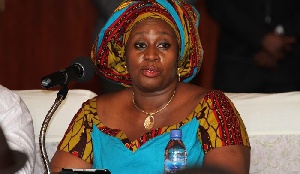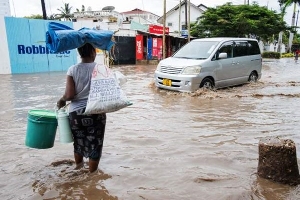Business News of Saturday, 3 March 2012
Source: GNA
Textile companies sign agreement to boost cotton cultivation
The Government’s commitment to revive the cotton industry on Friday received a boost when three companies signed a business agreement with the assurance to cotton farmers that their labour and investment would yield dividend.
The companies; Textyles Ghana Limited (TSG), Volta Star Textiles Limited (VSTL) and Wienco Ghana Limited (Wienco) by their business partnership, are expected to deepen and strengthen value addition to local raw materials and enhance production in the textile industry.
By the agreement, TSG would be expected to buy one million cotton lint produced by Ghanaian farmers for VSTL to convert it into six million yards of grey cloth.
Wienco, which had already been granted a zone in the Upper East Region in 2011 where it had supported 7,000 farmers both technically and financially, gave the assurance that it would double the acreage under cultivation to produce enough cotton locally to feed the textile industry.
Speaking at a press conference organised in Accra by the Ministry of Trade and Industry, Mr Daniel Van Wassenhove, Technical Director of TSG, expressed the hope that the partnership would help to revive and sustain the textile industry.
He said “we believe that with this ‘Made in Ghana’ approach, we really are adding value to the Ghanaian society in creating jobs from the cotton farmer through the grey cloth manufacturing up to the dyeing and printing of African textiles.”
Mr Wassenhove appealed to the Government to grant the company a “deferment of Value Added Tax and National Health Insurance Levy payment” to cover raw cotton purchase.
Mr Evans Agyagbo, Acting Technical Director of VSTL, said by virtue of the partnership, the company’s plant capacity utilisation would increase from the current 10 per cent to 30 per cent this year.
“The factory will engage additional hands in its catchment area. There will be an improvement in VSTL’s financial position and the company’s contribution to the Ghanaian economy will improve through payee tax mobilisation, VAT and Social Security and National Insurance Trust contributions,” he said.
Mr Daniel Ruegg, Chief Executive Officer of Wienco, said the time had come to develop a new momentum in the textile industry in Ghana, starting from the production of cotton to the sale of textiles made in Ghana.
Ms Hanna Tetteh, Minister of Trade and Industry, expressed the hope that the revival and sustenance of the cotton industry would soon make Ghana to become a net exporter of cotton.
She appealed to the media to intensify public education on the cost of counterfeiting and pirating of textile products to the Ghanaian economy.
Until recent times, cotton farmers were experiencing pain and frustrations as a result of loss of revenue and labour in the cultivation and production of cotton due to the dormant local textile industry.
It would be recalled that the Ghana News Agency reported on March 27, 2011 that Mr Kwesi Ahwoi, Minister of Food and Agriculture (MOFA), said Ghana lost about 625 million dollars last year because the country's cotton industry went dormant.
Speaking at Tempane in the Garu Tempane District, in the Upper East Region the Minister expressed regret that the cotton industry suffered a setback during the past few years and said the disappointment and painful experiences of wasted labour and financial losses on the part of farmers would be a thing of the past.
He was hopeful that the country could produce 250,000 metric tons of lint cotton in the medium term adding that such tonnage would require the involvement of about 500,000 farmers in cotton cultivation across the three northern regions.
Mr Ahwoi said with the current world market prices averaging US$2,500 per metric tonne, the three northern regions could have earned an income of US$625 million for Ghana during the 2010 crop season.
Government had therefore embarked on a cotton sector revival programme and had zoned the cotton belt into three and assigned to three companies for the production of the crop. The North-Eastern Zone has been allocated to Wienco, in partnership with Geo-Cotton and it is said to cover Kasina-Nankana, Tongo/Nabdam, Bawku West, Bawku Municipality, Garu-Tempani, Bongo and Builsa.
Others are West Mamprusi, East Mamprusi, Buunkpurugu, Gushiegu, Saboba, Chereponi and Zubzugu.
Olam Ghana Limited had also been allocated the North-Western Zone, covering Sissala East, Sissala West, Jirapa, Lambussie/Karni, Lawra, Nadowli, Wa East and Wa West Districts and Wa Municipality.
Plexus in partnership with Amajaro Ghana Limited was allocated to the North-Central Zone, which comprised Savelugu, Tolon/Kumbungu, Bimbilla, Wullensi, Salaga, Bole, Damongo, Buipe, Sawla-Tuna-Kalba and Kpandai districts as well as Yendi Municipality and the Tamale Metropolis.










